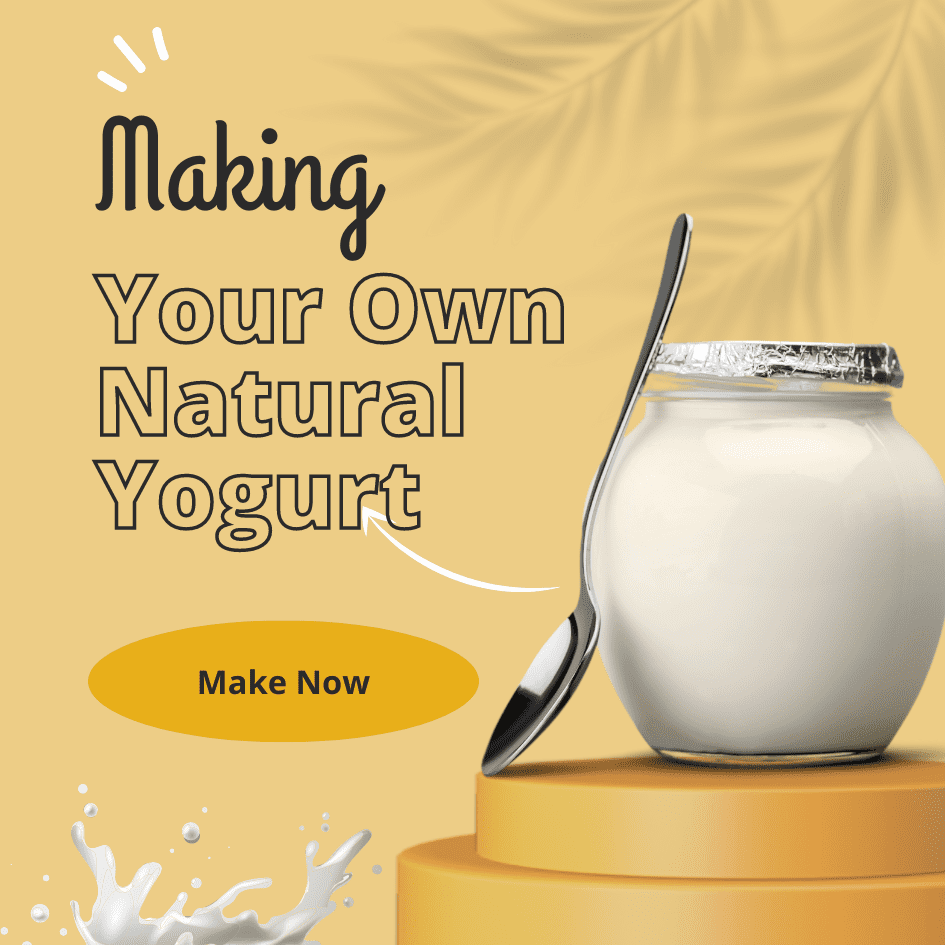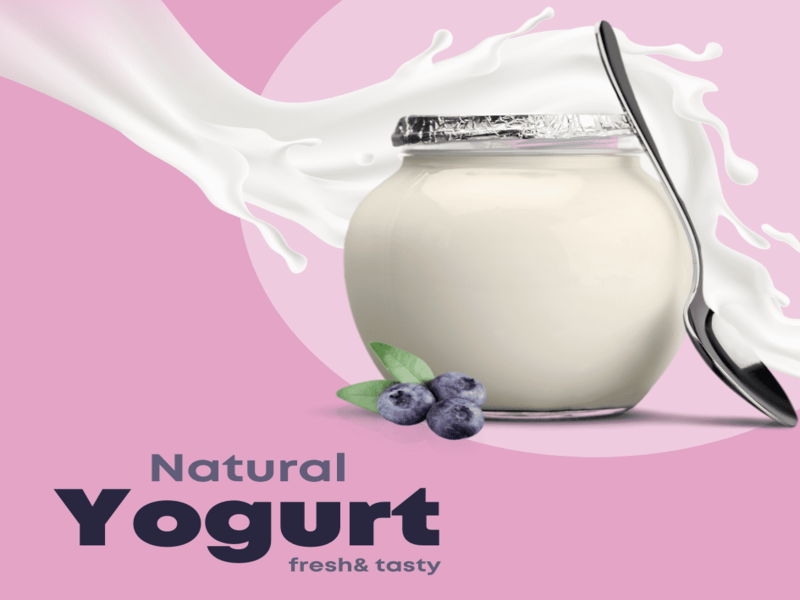Introduction to Natural Yogurt
There’s something undeniably comforting about a spoonful of creamy, tangy yogurt. Whether enjoyed on its own or as a versatile ingredient in countless recipes, yogurt has become a staple in many households. But have you ever considered making your own natural yogurt at home? In this guide, we’ll explore the wonderful world of homemade yogurt, from its enticing benefits to a step-by-step process that will have you crafting your own delicious batches in no time.
Benefits of Making Your Own Natural Yogurt
When it comes to homemade yogurt, the benefits extend far beyond the taste. Let’s take a closer look at why embarking on this culinary adventure is worth your while.
Control over Ingredients: In a world where processed foods often dominate the grocery store shelves, creating your own yogurt gives you the power to choose the ingredients that go into it. By opting for high-quality milk and a yogurt starter culture free from additives or preservatives, you can enjoy a wholesome treat that aligns with your dietary preferences and needs.
Cost Savings: We all appreciate ways to save money without compromising on quality. Making your own yogurt is not only a fulfilling endeavor but also an economical one. By investing in a few key ingredients and equipment, you’ll find that the cost per serving of homemade yogurt is significantly lower compared to store-bought options.
Probiotic Richness: One of the main draws of yogurt lies in its probiotic content, which promotes a healthy gut and boosts the immune system. When you make yogurt at home, you can ensure that your creation is bursting with beneficial bacteria, providing you with all the probiotic goodness you desire.
Customization and Flavor Variations: Say goodbye to the limitations of store-bought yogurt flavors! Creating your own allows you to unleash your creativity and experiment with a plethora of flavors, toppings, and textures. From adding fresh fruits and honey to incorporating crunchy granola or a drizzle of maple syrup, the possibilities are endless, catering to your unique taste preferences.
Natural yogurt, with its creamy texture and tangy flavor, has become a popular choice for health-conscious individuals seeking a nutritious and delicious snack. Unlike its flavored counterparts, natural yogurt is free from artificial sweeteners, colors, and additives, making it a wholesome option that can be enjoyed in various ways. Let’s delve deeper into the wonders of natural yogurt and explore why it has gained such a loyal following.
- Pure Goodness: Natural yogurt is a simple yet powerful combination of two ingredients: milk and live cultures. It undergoes a natural fermentation process where the live cultures convert lactose, the natural sugar present in milk, into lactic acid. This process gives yogurt its characteristic tangy taste while retaining the nutritional benefits of milk. It is this simplicity that makes natural yogurt an excellent choice for those seeking a clean, unadulterated food option.
- Nutritional Powerhouse: Not only does natural yogurt offer a delightful taste experience, but it also packs a nutritional punch. It is a rich source of high-quality protein, essential for muscle repair and growth. Additionally, it contains vital nutrients such as calcium, phosphorus, potassium, and B vitamins. Calcium, in particular, plays a crucial role in maintaining strong bones and teeth. Including natural yogurt as part of a balanced diet can help meet your nutrient needs and support overall well-being.
- Gut Health Support: One of the key reasons people gravitate toward natural yogurt is its positive impact on gut health. The live cultures present in yogurt, including Lactobacillus and Bifidobacterium strains, act as probiotics. These friendly bacteria help maintain a healthy balance of gut flora, supporting digestion and aiding in nutrient absorption. Consuming natural yogurt regularly can contribute to a thriving gut microbiome, promoting optimal digestive function and potentially reducing the risk of certain gastrointestinal disorders.
- Versatility in Culinary Creations: Natural yogurt’s versatility extends beyond being a standalone snack. Its creamy texture and tangy flavor make it an excellent addition to a variety of dishes. Whether used as a base for smoothies, a topping for granola or fresh fruit, or a creamy ingredient in salad dressings and dips, natural yogurt adds a delightful twist to recipes. It can even be incorporated into baked goods to enhance moisture and provide a subtle tang. The possibilities are endless, allowing you to get creative in the kitchen and explore new flavor combinations.
- Suitable for Various Dietary Needs: Natural yogurt caters to a wide range of dietary preferences and restrictions. For individuals who are lactose intolerant, opting for yogurt made from lactose-free milk or dairy-free alternatives, such as almond or coconut milk, can provide the same probiotic benefits without discomfort. Additionally, natural yogurt is naturally gluten-free and can be enjoyed by individuals with gluten sensitivities or celiac disease. It serves as a valuable ingredient in many recipes for those following vegetarian or flexitarian diets.

How to Make Your Own Natural Yogurt
Now that we’ve uncovered the enticing benefits of homemade yogurt, let’s dive into the step-by-step process of bringing this delectable creation to life in your very own kitchen.
Step 1: Equipment and Ingredients: Before you embark on your yogurt-making journey, gather the necessary equipment, such as a pot, a thermometer, and sterilized jars. Ensure you have fresh, high-quality milk and a yogurt starter culture readily available.
Step 2: Heating and Cooling: Begin by gently heating the milk, allowing it to reach a specific temperature. This step is crucial, as it helps sterilize the milk and activates the necessary enzymes for fermentation. Once heated, let the milk cool to the appropriate temperature, ready for the addition of the starter culture.
Step 3: Adding the Starter Culture: Incorporate the yogurt starter culture into the cooled milk, mixing it thoroughly to ensure even distribution. This culture acts as the catalyst for fermentation, kickstarting the transformation of milk into delectable yogurt.
Step 4: Incubation: During the incubation period, maintaining the ideal temperature is key. You can employ various methods, such as using a yogurt maker or a warm oven, to create a cozy environment for the fermentation process. Patience is essential here, as the yogurt needs time to develop its signature tangy flavor and creamy consistency.
Step 5: Straining (Optional): For those seeking a thicker, more velvety yogurt, the option of straining exists. By using a cheesecloth or a fine-mesh sieve, you can separate the whey from the yogurt, resulting in a luxurious texture akin to Greek yogurt. Experiment with different straining duration to achieve your desired thickness.
Step 6: Refrigeration and Storage: Once the incubation and optional straining processes are complete, it’s time to refrigerate your homemade yogurt. Transfer it to clean, airtight containers and allow it to chill for a few hours or overnight. This step helps the yogurt set and develop its flavor further. Remember to reserve a portion of your homemade yogurt as a starter culture for future batches.
FAQs (Frequently Asked Questions): As you embark on your homemade natural yogurt-making journey, you may have some questions. Let’s address a few common queries to ensure a smooth and enjoyable experience.
- Can I use different types of milk to make yogurt?
Absolutely! While cow’s milk is the most commonly used, you can experiment with various milk types, such as goat’s milk, sheep’s milk, or even plant-based alternatives like almond milk or coconut milk. Keep in mind that different milk types may require slight adjustments in the incubation process. - How long does it take for yogurt to incubate?
The incubation time for yogurt can range from 4 to 12 hours, depending on various factors such as the desired tanginess and thickness. Factors like temperature, the potency of the starter culture, and personal preference can influence the incubation period. It’s best to monitor the consistency and flavor throughout the process to achieve your desired results. - Can I use store-bought yogurt as a starter culture?
Yes, you can use store-bought yogurt with live cultures as a starter for your homemade yogurt. Look for plain yogurt with active cultures listed on the label. Ensure that the yogurt you choose doesn’t contain any additives, sweeteners, or thickeners, as these may interfere with the fermentation process. - How long can homemade yogurt be stored?
Homemade yogurt can be stored in the refrigerator for up to two weeks. However, its flavor and texture are at their best within the first week. To prolong its shelf life, consider straining excess whey, as it helps prevent separation and maintain the yogurt’s creamy consistency.
Conclusion
Congratulations! You’ve embarked on a culinary adventure that rewards you with the delightful experience of homemade yogurt. By making your own natural yogurt, you have gained control over ingredients, unlocked cost savings, and embraced a probiotic-rich treat tailored to your tastes. Follow our step-by-step guide, experiment with flavors and toppings, and enjoy the satisfaction of creating a wholesome and delicious snack right in your own kitchen.
In conclusion, natural yogurt is a versatile and nutritious food choice that has captured the hearts and taste buds of many. With its pure ingredients, health benefits, and culinary adaptability, it has become a staple in kitchens worldwide. Whether enjoyed as a snack, incorporated into recipes, or used as a gut-friendly ingredient, natural yogurt offers a delightful and wholesome addition to your daily routine. So go ahead, indulge in the creamy goodness of natural yogurt and experience the joys of this remarkable food. Your taste buds and your body will thank you.
So, why wait? Start your journey to homemade yogurt bliss today and savor the many benefits that come with each creamy spoonful. Your taste buds and overall well-being will thank you for it.







Leave feedback about this